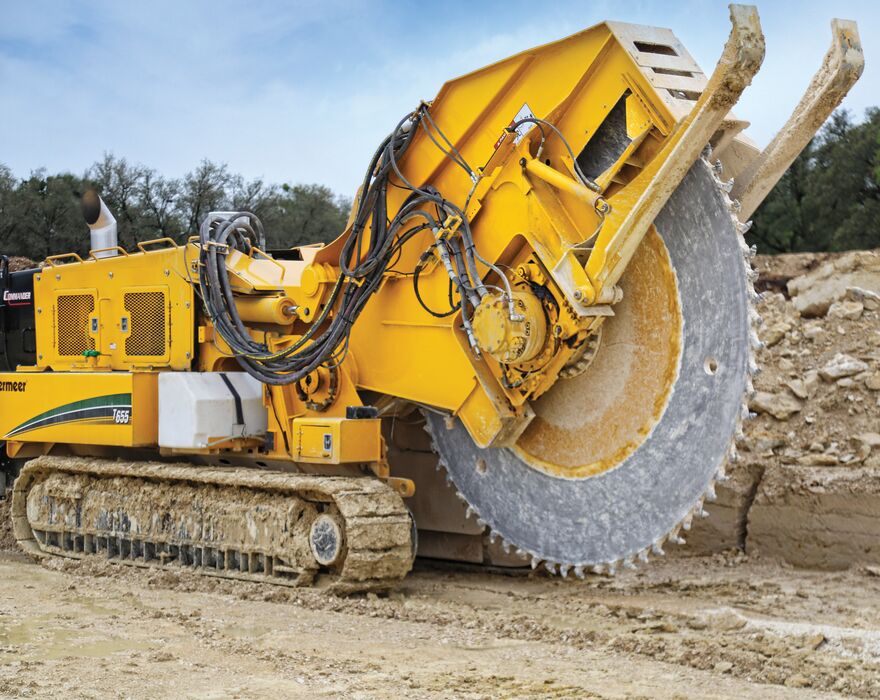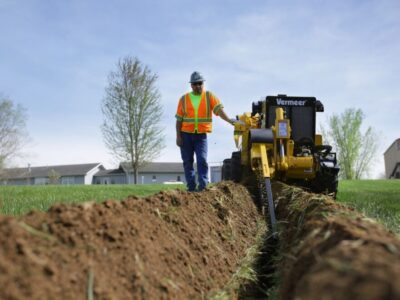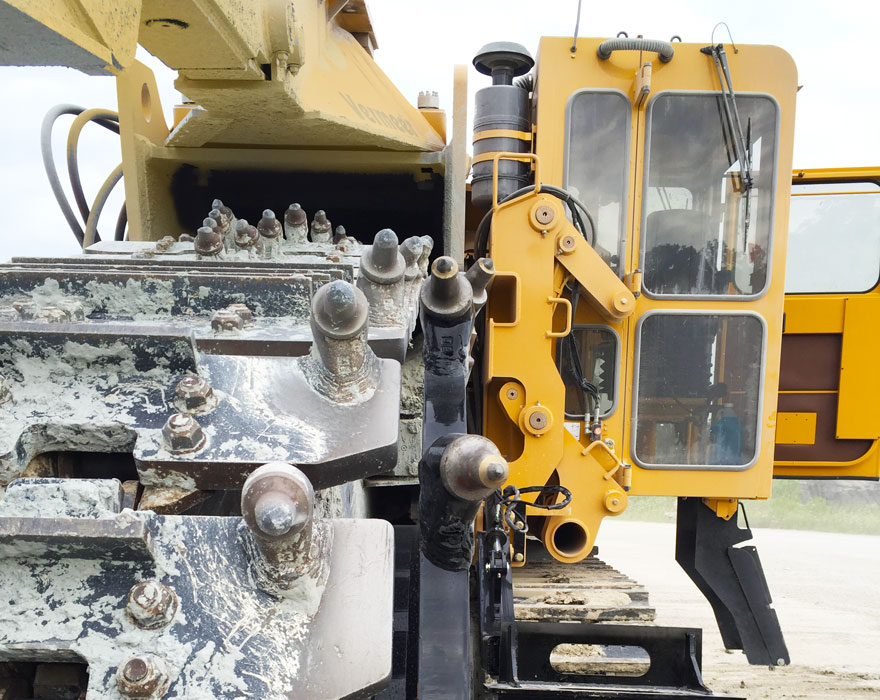Trenchers are the unsung hero of the utility installation jobsite. While some models are built with a boom-and-chain, many can be adjusted with different attachments. The ability to customize trencher models to specific project requirements is a testament to trenching’s continued use in the construction industry.
The wide array of trenching machines and attachments available today allows for efficient and effective utility installations. From small residential projects to large-scale industrial applications, learn how to configure your Vermeer trencher to help boost your jobsite productivity.
Help increase residential productivity with small trencher attachments
Most small trenchers are equipped with a chain-and-boom trencher or a vibratory plow, and some units even come with both.
Other accessories include a backfill blade and a Porta Bore attachment, used for trenching under sidewalks and driveways.
Small trenchers are easy to maneuver in small spaces. Adding attachments to small trenchers increases the capability of Vermeer machines on the jobsite while still maintaining the small footprint needed for many residential jobs.
Microtrenchers and other attachments for mid-sized trenchers
Mid-sized trenchers, commonly referred to as ride-on tractors, can be outfitted with multiple attachments, an advantage for contractors who take on a variety of tasks. From landscaping to utility installations, there are many efficient applications of ride-on tractors and their attachments.
In addition to conventional chain-and-boom trenching attachments, many models can be easily adapted with a vibratory plow, microtrencher or rockwheel trencher.
A microtrencher is used to open a narrow and shallow trench in an asphalt roadway, usually in the seam between the asphalt road and concrete curb/apron. Microtrenching can be more cost-effective and time-efficient than horizontal directional drilling, making it favorable for fiber or small conduit jobs.
Microtrenching helps contractors avoid other utilities, particularly in areas with crowded underground right-of-ways. Additionally, future repairs to damaged lines can be easier to access.
If your crew is working on rock, their productivity may increase by using a rockwheel attachment to cut a trench.
Rockwheel and bucket wheel attachments for large trenchers
Large trenchers, such as the Vermeer T655 Commander® III trencher, are known for their versatility. They handle different types of excavation using rockwheel and bucket wheel attachments, which improve digging in various ground conditions.
When there is a need for utility work in rocky terrains or when your team needs to cut through concrete or asphalt, rockwheel attachments can come into play.
According to Vermeer Applications Specialist Gregg Van Roekel, “In solid rock, where smaller utility-sized rockwheels may struggle, you can upgrade to a rockwheel attachment designed for use on larger, more powerful trenchers.”
Bucket wheel attachments, available on the Vermeer T655III, are ideal for highly productive trenching in soft soil conditions. Van Roekel explained, “A bucket wheel features a series of buckets rotating in a circular motion to assist in moving more dirt from the trench. This trencher configuration is ideal for installing electrical lines, water pipes and tiling in agricultural applications.”
He adds that any large Vermeer trencher can be customized with different boom length options and chain configurations to optimize trenching performance from one job to the next.

Trenching: A proven method for successful utility installation
While trenchless installation methods gather attention for their role in installing underground utilities, trenchers continue to play an important part in the installation process.
Trenching is the backbone of the underground utility market because of the wide range of trencher models and attachments available to cater to different project needs.
For more information about Vermeer trenchers and trencher attachments, contact your local Vermeer dealer today.
Vermeer Corporation reserves the right to make changes in engineering, design and specifications; add improvements; or discontinue manufacturing at any time without notice or obligation. Equipment shown is for illustrative purposes only and may display optional accessories or components specific to their global region. Please contact your local Vermeer dealer for more information on machine specifications.
Vermeer, the Vermeer logo and Commander are trademarks of Vermeer Manufacturing Company in the U.S. and/or other countries.
© 2024 Vermeer Corporation. All Rights Reserved.

